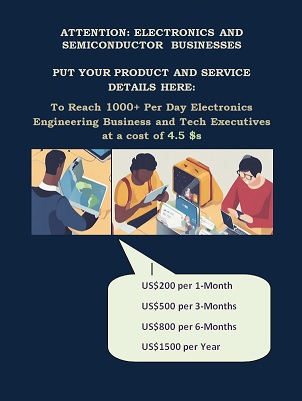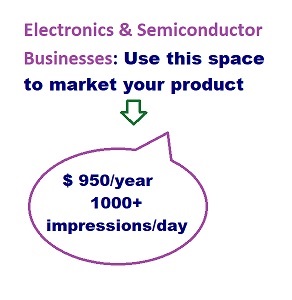Exploring the World of Embedded Technology: The Demand for Embedded Edge AI
Date: 11/12/2023
From Artificial Intelligence (AI) and the Internet of Things (IoT) to power management and wireless interconnectivity, behind these innovative applications and solutions is the invisible hero — the Embedded System. Embedded technology is an interdisciplinary technology that integrates passive electronics, computer technology, signal processing technology and other components, and is widely used in industrial and commercial electronics.
Today, intelligence is everywhere in the embedded world. Manufacturers across the world are invested in delivering solutions related to Embedded Artificial Intelligence (Embedded AI) or Edge Artificial Intelligence (Edge AI). For example, Renesas Electronics features a range of development solutions that streamline the implementation of AI with its various MCU solutions, Lattice Semiconductor produces a wide range of low-powered Field Programmable Gate Arrays (FPGAs) that are designed to work with AI or Machine Learning (ML) algorithms, and Texas Instruments’ heterogeneous processors incorporate dedicated accelerators for deep learning and traditional algorithms.
Besides AI, adjacent innovations such as IoT, automotive electronics, and RISC-V are all currently hot topics related to the world of embedded electronics.
The Demand for Embedded Edge AI
The pace at which the world is becoming intelligent is unprecedented. AI algorithms now support billions of interconnected sensors, devices, and systems and generate incredible volumes of data daily. Consequently, traditional computing CPUs are under tremendous pressure.
So, how can we effectively release CPU computing pressure while concurrently enhancing global intelligence and efficiency? This demand for intelligence at a constrained resource budget accelerates the need for network-edge AI. Thanks to changes in semiconductor and electronic technology, smart decisions can be made at the local device level instead of central cloud solutions.
While transferring all data to the cloud for processing provides increased computational capacity, it can also introduce potential anomalies such as delays, network disconnections, and the risk of data leaks. However, when intelligent computing is deployed at the edge, these issues can be mitigated effectively, reducing processing delays and freeing up network bandwidth. Research firm Gartner predicts that by 2025, 75% of data will be generated at the edge of the network[1], illustrating how we are seeing a monumental shift away from centralised processing to the edge.
For many, ubiquitous intelligence is the next trend; in the future, almost every device may have some kind of visual and auditory capabilities and localised decision-making. In terms of development, the industry has widely embraced the model of ‘cloud-based training and edge-based reasoning.’ Since Machine Learning (ML) training is typically conducted in the cloud, inference can be carried out either in the cloud or on the device, and ML computing processing can be performed at the edge. By adopting this approach, it is possible to diminish the data bandwidth uploaded to the cloud, enhance the response speed of local devices, fortify local data security, and accelerate AI implementation.
But new challenges also arise at the edge. Edge devices will inevitably face limitations in power consumption, computing power, and cost.
After Smartphones, What is the Next ‘Super’ Product?
The evolution of embedded technology not only gives rise to numerous emerging technologies and intelligent applications but also extends its impact beyond its traditional boundaries. Many distinctive applications now transcend embedded technologies, offering diverse solutions to establish a customized and intelligent computing platform. Preceding the era of smartphones, our mobile phones were essentially embedded devices. But as time passed, technological development from companies such as Apple and Google, simple mobile phones evolved into smartphones. Mobile phone chips have become more and more powerful, equipped with supercomputing power, enhanced with powerful AI, and integrating rich functionalities. Today’s smartphones stand out from the embedded world, emerging as dynamic computing platforms that have revolutionized our lifestyles and professional landscapes.
The Rise of Intelligent Vehicles
Anticipating the next breakthrough solutions that will reshape our current landscape, smart cars will undoubtedly emerge as one of them. At this moment, the automotive industry is undergoing a renaissance, driven by advancements in its underlying technology. These innovations are bringing forth a series of changes that impact beyond the vehicle itself, influencing lifestyle, production processes, and cognitive aspects associated with it.
First of all, this revolution could change how people interact with vehicles. The advent of autonomous driving introduces the prospect of cars transforming into a 'third living space,' featuring greater entertainment and work functionalities.
Secondly, the new enhancements in safety. The improvement of automotive intelligence and the evolution of autonomous driving systems will ultimately reduce accident rates and improve people’s happiness and perception of both vehicles and road safety.
Lastly, the change in automobile value positioning. Cars will transform from previous industrial-grade equipment to consumer-grade equipment. The smart car space is undoubtedly the forthcoming digital convergence paradigm, that seamlessly integrates and implements various digital tools and technologies, including infotainment, communications, and computing.
Augmented/Mixed Reality (AR/MR) Devices
Experts and market analysts alike have projected that areas of the consumer electronics market, such as smartphones, may no longer sustain continuous growth. However, a promising area for potential expansion is within Augmented Reality (AR) and Mixed Reality (MR) devices. As an important entrance to another growing frontier, the metaverse, smart headsets and glasses can allow us to ‘naturally’ connect the virtual and real worlds. One solution aiming to achieve just this is Apple’s newly unveiled Vision Pro MR glasses. Through this product, Apple seeks to transcend the realm of entertainment and gaming, catering to a broader range of social and professional contexts as well.
The ongoing trend in technology development is focused on creating a seamless connection between the physical and virtual worlds. After over a decade of progress in this domain, augmented and Virtual Reality (VR) technology has now reached a level of maturity. The AR/VR world has now officially opened its doors, and the technology will penetrate various fields such as industrial manufacturing, automobiles, commerce, social networking, and numerous other scenarios.
Exploring the Latest Embedded AI Solutions
Renesas
Recently, Renesas Electronics has started integrating AI functions into its RA family of MCUs to develop embedded intelligence at the edge.
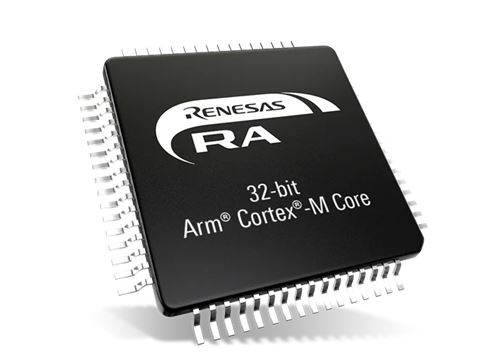
Figure 1 – Renesas RA MCU (Source: Mouser)
In June last year, Renesas Electronics announced that it had acquired Reality AI, a US-based embedded AI solutions provider. Today, Reality AI’s extensive embedded edge AI and TinyML solutions have been perfectly integrated into Renesas’ embedded processing and IoT products, which can be used in various applications such as advanced non-visual sensing in automotive, industrial, and consumer products. The AI solutions can provide advanced mathematical methods for signal processing to achieve fast and efficient machine learning inferences that can be applied to Renesas’ small MCUs and powerful MPUs.
For example, Renesas have demonstrated reference examples for using their MCUs and AI in powerful DC motor predictive maintenance. The synergy between AI tools and MCU facilitates real-time detection across a broad range of industrial applications. This combination is capable of detecting minor deviations in system parameters that may indicate potential maintenance issues and abnormalities in advance. Moreover, it excels in the early-stage identification of faults and hazards in industrial settings.
Lattice Semiconductor (Lattice)
Lattice’s objective is to migrate AI capabilities onto FPGA chips to attain low power consumption, low cost, and seamless operation. Over the past few years, Lattice has made substantial investments in the research and development of edge AI.
The Lattice SensAI solution stack provides engineers with the capability to implement cutting-edge neural network algorithms on low-power FPGAs. This offers edge AI computing capabilities, facilitates Intel’s latest MTL platform, and enables functionalities like 3D face recognition, automatic screen light adjustment, automatic screen off, face unlock, and other intelligent visual features.
Lattice's iCE40 UltraLite FPGAs are designed to meet the growing demands for high performance but low power and costs across communication, computing, automotive, industrial, and consumer applications (Figure 2).
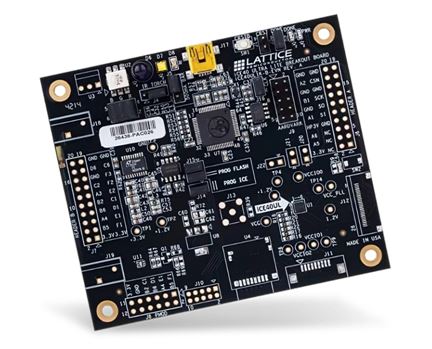
Figure 2 – Lattice Semiconductor iCE40 UltraLite Breakout Board (Source: Mouser)
The introduction of an AI recognition function to low-power FPGA enables a reduction in the dependency on high-power CPU for recognition purposes. Typically, the power consumption of CPU computing power ranges from several watts to more than ten watts. In contrast, the power consumption of corresponding Lattice FPGA devices is in the range of hundreds of milliwatts.
Although the implementation of edge AI is not restricted to FPGAs, GPUs, or MCUs, Lattice believes that leveraging the flexibility of FPGAs is a sensible option for its implementation until the AI functionality is fully established.
Texas Instruments (TI)
How do we embed intelligence into the edge? From the product side, TI has a very clear direction - multicore heterogeneous design. For example, TI’s new generation Sitara Microprocessor (MPU) series, such as the TDA4, AM69A, AM68A, AM62A, and other multicore heterogeneous processors, can help customers quickly develop edge AI applications (Figure 3).
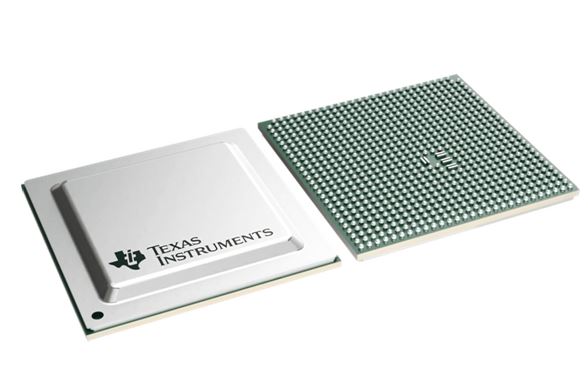
Figure 3 – TI Sitara Microprocessor (MPU) series (Source: Mouser)
TI’s solution integrates the CPU and the AI computing engine, implemented by a Digital Signal Processor (DSP) and Matrix Multiplication Accelerator (MMA), within the System on Chip (SoC), allowing it to run AI models at incredible efficiency.
Additionally, it integrates Graphics Processing Units (GPUs), multiple hardware-accelerated computing units, and graphics rendering functional modules, including the Image Signal Processors (ISPs). Some functional safety modules, such as automotive-grade ISO26262 or industrial-grade IEC61908, are also integrated into the SoC.
Such a multicore heterogeneous SoC can complete a series of tasks, such as processing, fusion, and calculation of data signals coming from front-end sensors and subsequent decision-making and execution. It can be used in various applications, including Advanced Driver-Assistance Systems (ADASs), industrial-grade machine vision, smart cameras, and many new scenarios where rapid processing and decision-making are needed.
Conclusion
Over the past few decades, embedded electronics have played a pivotal role in the growth of solutions ranging from phones and home appliances to industrial and automotive control systems. As we envision the future, a diverse range of emerging technologies are poised to reshape our work and lifestyle, concurrently fuelling market growth. Whether the next revolutionary product manifests as AI, AR/VR, or intelligent automotive applications, embedded electronics will play a pivotal role in the successful development and execution of these technologies.
With the growing demand for smart electronics and the need for elevated processing performance at a lower power budget, there will also be a continued shift in focus from centralised cloud solutions towards edge-enabled devices. The power of modern MCUs, MPUs, SoCs, and FPGAs can not only pave the way for emerging innovations like AI and VR, but also enhances existing electronics with low power and intelligent localised decision making, contributing to increase our digital harmony and global efficiency.
References
[1] – https://www.gartner.com/smarterwithgartner/what-edge-computing-means-for-infrastructure-and-operations-leaders
Article by Mouser Electronics
Authorised Distributor
www.mouser.com
